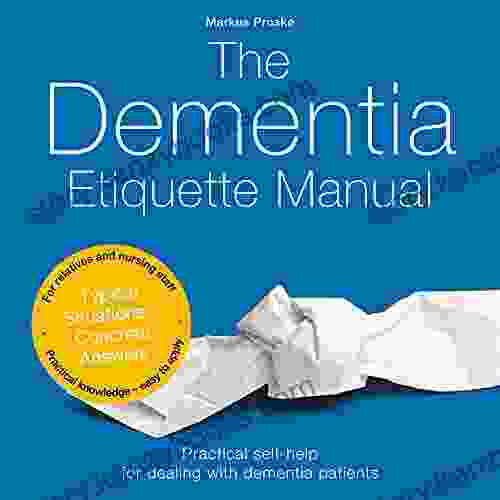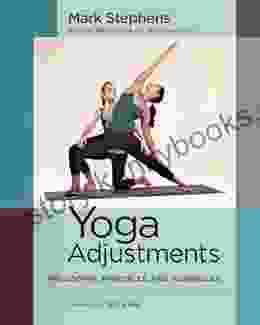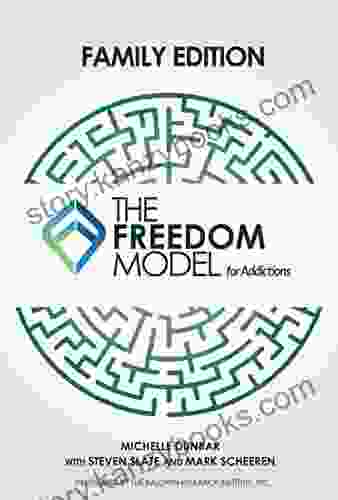Yoga Adjustments: Philosophy, Principles, and Techniques

Yoga adjustments are a powerful tool that can help you deepen your practice, improve your alignment, and prevent injuries. When done correctly, adjustments can help you to: 4.7 out of 5Language : English File size : 100463 KB Text-to-Speech : Enabled Enhanced typesetting : Enabled Word Wise : Enabled Print length : 1189 pages Screen Reader : Supported 
The Philosophy of Yoga Adjustments
The philosophy of yoga adjustments is based on the principles of non-violence and compassion. The goal of an adjustment is to help the student to find their own optimal alignment, rather than to force them into a specific position. Adjustments should be given with respect for the student's body and their individual needs.
There are many different styles of yoga adjustments, each with its own unique philosophy and approach. Some of the most common styles include:
- Iyengar yoga adjustments: Iyengar yoga adjustments are based on the teachings of B.K.S. Iyengar. This style of adjustment uses props, such as blocks, straps, and blankets, to help students to find their optimal alignment.
- Ashtanga yoga adjustments: Ashtanga yoga adjustments are based on the teachings of Pattabhi Jois. This style of adjustment is more dynamic and vigorous than Iyengar yoga adjustments, and it often involves the use of hands-on adjustments.
- Vinyasa yoga adjustments: Vinyasa yoga adjustments are based on the teachings of T.K.V. Desikachar. This style of adjustment is fluid and graceful, and it often involves the use of verbal cues and gentle touch.
No matter what style of yoga you practice, it is important to find a teacher who is experienced in giving adjustments and who understands your individual needs. A good teacher will be able to help you to develop a safe and effective practice.
The Principles of Yoga Adjustments
There are a few key principles that should be followed when giving yoga adjustments.
- Safety first: The most important principle of yoga adjustments is safety. Never do anything that could put your student at risk of injury.
- Respect the student's body: Always ask your student if it is okay to give them an adjustment. And never force a student into a position that they are not comfortable with.
- Use props when necessary: Props can be used to help students to find their optimal alignment. However, props should not be used as a substitute for proper alignment.
- Be gentle: Adjustments should be given with a gentle touch. Avoid using excessive force, and always be mindful of your student's body language.
- Be verbal: Use verbal cues to help your student to understand the adjustment. This will help them to learn how to find their own optimal alignment.
Techniques for Yoga Adjustments
There are a variety of techniques that can be used to give yoga adjustments. Some of the most common techniques include:
- Hands-on adjustments: Hands-on adjustments are the most direct way to give an adjustment. However, it is important to use caution when giving hands-on adjustments, and never use excessive force.
- Verbal adjustments: Verbal adjustments are a less direct way to give an adjustment. However, verbal adjustments can be very effective, especially for students who are new to yoga or who are not confident in their alignment.
- Prop adjustments: Props can be used to help students to find their optimal alignment. Props can be used to provide support, to create space, or to correct alignment.
- Self-adjustments: Self-adjustments are adjustments that students can give to themselves. Self-adjustments can be very helpful for students who are working on their alignment or who have specific injuries.
The best way to learn how to give yoga adjustments is to take a yoga class from a qualified teacher. A good teacher will be able to teach you the proper techniques for giving adjustments, and they will also be able to help you to develop a safe and effective practice.
Yoga adjustments are a powerful tool that can help you to deepen your practice, improve your alignment, and prevent injuries. When done correctly, adjustments can help you to achieve your yoga goals and to live a healthier, more fulfilling life.
4.7 out of 5
| Language | : | English |
| File size | : | 100463 KB |
| Text-to-Speech | : | Enabled |
| Enhanced typesetting | : | Enabled |
| Word Wise | : | Enabled |
| Print length | : | 1189 pages |
| Screen Reader | : | Supported |
Do you want to contribute by writing guest posts on this blog?
Please contact us and send us a resume of previous articles that you have written.
 Book
Book Novel
Novel Page
Page Chapter
Chapter Text
Text Story
Story Genre
Genre Reader
Reader Library
Library Paperback
Paperback E-book
E-book Magazine
Magazine Newspaper
Newspaper Paragraph
Paragraph Sentence
Sentence Bookmark
Bookmark Shelf
Shelf Glossary
Glossary Bibliography
Bibliography Foreword
Foreword Preface
Preface Synopsis
Synopsis Annotation
Annotation Footnote
Footnote Manuscript
Manuscript Scroll
Scroll Codex
Codex Tome
Tome Bestseller
Bestseller Classics
Classics Library card
Library card Narrative
Narrative Biography
Biography Autobiography
Autobiography Memoir
Memoir Reference
Reference Encyclopedia
Encyclopedia Sydney Foster
Sydney Foster Orion Foxwood
Orion Foxwood Mark Miller
Mark Miller Madelain Farah
Madelain Farah Mark Starr Md
Mark Starr Md Mark Ovenden
Mark Ovenden William M Watson Sj
William M Watson Sj Mari Smith
Mari Smith Mark Story
Mark Story Mariam Hakim
Mariam Hakim Inaiya Ray
Inaiya Ray Manvir Singh Anand
Manvir Singh Anand Mark A Tuschel
Mark A Tuschel Luke Warren
Luke Warren Salvatore De Giraia
Salvatore De Giraia Mac Hernandez
Mac Hernandez Sharon Rush
Sharon Rush Maria Schneider
Maria Schneider Michael Ernest
Michael Ernest Mark Vorderbruggen
Mark Vorderbruggen
Light bulbAdvertise smarter! Our strategic ad space ensures maximum exposure. Reserve your spot today!
 Garrett BellFollow ·3.7k
Garrett BellFollow ·3.7k Darnell MitchellFollow ·4.3k
Darnell MitchellFollow ·4.3k Ray BlairFollow ·16.6k
Ray BlairFollow ·16.6k Billy PetersonFollow ·4.5k
Billy PetersonFollow ·4.5k Dean ButlerFollow ·15.7k
Dean ButlerFollow ·15.7k H.G. WellsFollow ·3.6k
H.G. WellsFollow ·3.6k Dale MitchellFollow ·11.5k
Dale MitchellFollow ·11.5k George BellFollow ·3.7k
George BellFollow ·3.7k

 Austin Ford
Austin FordJames Madison: His Notes on the Constitutional Debates of...
James Madison's...

 Robin Powell
Robin PowellThe Dementia Etiquette Manual: A Comprehensive Guide to...
If you're like most...

 Wade Cox
Wade CoxEmbark on an Unforgettable Journey through the Ironroot...
Step into the captivating realm of Ironroot...

 Ralph Waldo Emerson
Ralph Waldo Emerson300 Everyday Recipes: The Ultimate Cookbook for Beginners...
Are you ready to...

 Dakota Powell
Dakota PowellJade Empire: Tales of the Empire: Unravel the Enthralling...
Prepare to embark on an extraordinary...

 Harold Blair
Harold BlairElevate Your Comfort Food: The Essential Easy Mashed...
Unveiling the...
4.7 out of 5
| Language | : | English |
| File size | : | 100463 KB |
| Text-to-Speech | : | Enabled |
| Enhanced typesetting | : | Enabled |
| Word Wise | : | Enabled |
| Print length | : | 1189 pages |
| Screen Reader | : | Supported |












